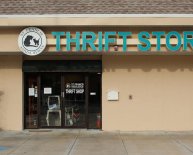
Animal Rescue No-Kill
As the nation's largest no-kill animal sanctuary, we receive thousands of requests for admission every year. Because of our reputation for lifesaving work, many people want to know how animals come to us. We are also often asked questions, such as, "Where can I give up my dog for adoption?"
Types of animals who come to the Sanctuary
The majority of the animals we're able to accept at Best Friends are cats and dogs who need to be able to live in our very high-energy environment with staff, visitors, volunteers, and other animals.
Aggressive and/or fearful animals
In order to provide the highest possible quality of life for animals at the Sanctuary, we house most of our residents in groups to provide social interaction with plenty of room for exercise. For this reason, we are unable to accommodate most requests involving aggressive animals and those who are fearful of others of the same species. Aggressive animals, especially those who pose a risk to other animals, as well as cats who are fearful of other cats and dogs who are fearful of other dogs, need to be housed individually, and there is very limited individual housing at Best Friends.
Special-needs animals
Many of the animals at the Sanctuary have special needs, requiring a lot of space, trainer time, and caregiver resources. We can only commit to new animals as we have the ability to provide for them.
Criteria for admission
Admission decisions are made based on our ability to provide appropriate housing and care for each animal's unique needs. Although our goal is to help animals on their way to a loving home, we do make a lifetime commitment to the animals who come here, and potential admissions are considered in view of space and resources.
We give priority to admissions for animals coming from our No More Homeless Pets Network rescue group and shelter partners and to animals coming from existing Best Friends outreach programs. We can only accommodate a small fraction of the requests for admission that we get every year.
Admission process
Our admissions process includes communication between one of our regional specialists and the caregiver of the animal at the rescue organization or shelter to look at a variety of options to help that animal. We rarely consider admission to Best Friends as the first option. Because of limited staff resources, we are not able to personally respond to every individual request.
Pet help resources
For individuals who need help, please visit our resources section where you'll find resources on a wide array of topics, created for you by our experts here at Best Friends. There is information about training, health issues, finding a new home for animals, and much more. Almost always, for homeless pets in need, the best chance for a good home can be found right within their own community.
Thank you for taking time to care for animals in need. If we all work together, we can Save Them All.
Best Friends Animal Sanctuary Asilomar data: 2013-2015
Best Friends is dedicated to transparency, which is why we are committed to making data about our organization available to the public. The following statistics are produced in accordance with the Asilomar Accords to track Sanctuary arrivals and outcomes per Maddie’s Fund contract requirements.

















